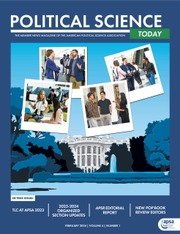As lockdowns were imposed across the world in the wake of COVID-19, people in conflict-affected states worried that armed groups might try to capitalize on the pandemic and increase attacks. However, a recent APSR article by Brancati, Birnir, and Idlbi suggests that these restrictions on population mobility to address a public health concern had the unintended beneficial effect of reducing violent attacks. They investigate the impact of COVID-19 lockdowns on attacks by armed groups by focusing on the case of the Islamic State of Iraq and Syria (ISIS), an insurgent group, and find that ISIS attacks decreased because of lockdowns, particularly in areas that were heavily populated and areas where ISIS did not have established bases. The authors propose that lockdowns can reduce attacks by groups like ISIS since they reduce the availability of resources and high-value targets while also making it logistically more difficult to carry out attacks.

Even though there is much research on the impact of violence within states on public health, there is not much research on public health initiatives on incidents of violence by insurgent groups. Brancati, Birnir and Idlbi address this gap by focusing on organizations that employ violence but do not control any territory. It is their lack of territorial control that subjects them to government lockdowns imposed to tackle COVID-19. ISIS is an important case to analyze the effect of lockdowns on violence: while it functions across Syria, Iraq and Egypt, it does not conclusively control territory in any of these countries. Furthermore, ISIS is actually a hard case to test the theory since it is well-resourced to survive the initial impact of the lockdown, functions mostly in rural, underpopulated areas, and tends to target government forces rather than civilians. Finally, ISIS vowed to use COVID-19 lockdowns to its advantage by increasing attacks as government forces were redirected towards addressing the public health emergency.
The authors triangulate the effect of COVID-19 lockdowns on ISIS-initiated violence by conducting a statistical analysis and interviews. First, they test whether the pandemic itself reduced the number of attacks at the state level for Iraq, Syria and Egypt. Then, the authors test whether lockdowns reduced the number of attacks at the governorate level in these countries and whether the effects were larger for more densely populated areas and areas outside ISIS’s base of operations. Finally, they use maps locating the ISIS attacks before and during the pandemic to understand how two forms of lockdown measures—internal travel bans and curfews—impacted the spatial distribution of violence. To test whether their three hypothesized mechanisms—resources, targets, and logistics—are responsible for the reduction in violence, they examined the cases through interviews with government officials, military leaders, and locals. For the statistical analysis, the authors use data over 78 weeks between December 31, 2018, and June 28, 2020, and compare each pandemic week in 2020 with its counterpart, non-pandemic week in 2019.
The findings indicate that in Iraq, where ISIS is strongest, the pandemic led to a decrease in the number of deadly events. Even though the number of non-deadly attacks increased in the early days of the pandemic, this was probably due to the temporary suspension of activities by Iraqi and US forces. Similarly, the pandemic also reduces the number of violent events in Syria and Egypt. Using maps, the authors home in on the effect of lockdowns—specifically curfews and internal travel bans—on the geographic dispersion of violence. The findings suggest that lockdowns affect the spatial distribution of violence: after lockdowns, attacks became more concentrated in ISIS’s main base, Diyala. Furthermore, lockdowns led to the shift of violent attacks from more populated, urban areas (such as Baghdad and Mosul) to less populated, rural regions (such as Diyala and Salah al-Din).
Qualitative analysis of the cases, including interviews with personnel, show that these changes in violence by ISIS were driven less by resource constraints and more by the absence of populated targets and logistical challenges. The authors contend that while lockdowns did impose some difficulties in garnering resources for ISIS, the group maintained substantial reserves. However, lockdowns directly affected the availability of high-impact targets—i.e., populated areas—and reduced the deadliness of ISIS attacks. Similarly, curfews and travel bans translated into the absence of civilians, making it difficult for ISIS members to operate undercover without detection, while also inhibiting regular channels of communication.
Since ISIS is a hard case: a case where lockdowns would not have been expected to have a very big effect, but they did. The reduction in violence after the imposition of COVID-19 lockdowns suggests that these effects might be even more pronounced for other groups employing violence against the state or its population. The authors utilize the unique opportunity of using COVID-19 lockdowns—that were enforced uniformly, without concern for levels of violence—to isolate the effect of population control measures on the number of attacks. Outside of the context of the pandemic, these results also highlight the efficacy of such lockdown measures as a counterinsurgency strategy.
BRANCATI, DAWN, JÓHANNA BIRNIR, and QUTAIBA IDLBI. 2023. “Locking Down Violence: The COVID-19 Pandemic’s Impact on Non-State Actor Violence.” American Political Science Review, 1–17. https://doi.org/10.1017/S0003055422001423


